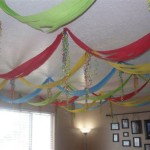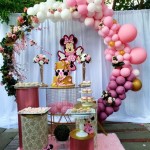Puja Room Decoration Design: Creating a Sacred Space
The puja room, also known as the prayer room or shrine, holds significant importance in many homes, particularly in Hindu, Buddhist, and other spiritual traditions. It serves as a dedicated space for prayer, meditation, and connecting with the divine. Designing a puja room involves careful consideration of several factors, including space availability, personal preferences, budget, and adherence to traditional principles. The goal is to create an atmosphere that is both aesthetically pleasing and conducive to spiritual practice.
The selection of materials, colors, and decor elements play a crucial role in shaping the ambiance of the puja room. A well-designed puja room can transform a simple space into a haven of peace and tranquility, fostering a deeper connection with one's faith and inner self.
Key Considerations for Puja Room Design
Before embarking on a puja room decoration project, it is essential to consider several key factors that will influence the overall design and functionality of the space. These considerations include the direction of the room, the size and layout, the choice of deities, and the storage requirements for religious items.
Direction:
In many traditions, the direction of the puja room is believed to have a significant impact on the flow of energy and the effectiveness of prayers. The east or northeast direction is generally considered auspicious, as it is associated with the rising sun and positive energy. If possible, orienting the puja room towards these directions can enhance the spiritual atmosphere. However, if these directions are not feasible due to space constraints or architectural limitations, other directions can be considered with appropriate adjustments to the design.Size and Layout:
The size of the puja room will depend on the available space and the desired scale of the shrine. Even a small corner of a room can be transformed into a dedicated prayer space. The layout should be functional and conducive to prayer and meditation. Ensure sufficient space for placing idols, lighting lamps, and performing rituals. Consider incorporating seating arrangements for comfortable meditation or prayer sessions.Choice of Deities:
The choice of deities to be placed in the puja room is a personal decision based on individual beliefs and family traditions. The idols should be carefully selected and arranged in a respectful manner. Avoid overcrowding the space with too many idols, as this can create a cluttered and overwhelming atmosphere. Focus on a few key deities that resonate with your personal faith and practice.Storage:
Adequate storage is essential for keeping religious items organized and accessible. This may include shelves, drawers, or cabinets for storing prayer books, incense sticks, lamps, and other ritual items. Consider incorporating closed storage to conceal clutter and maintain a clean and serene environment. The storage should be designed to blend seamlessly with the overall aesthetics of the puja room.Essential Elements of Puja Room Decoration
Once the key considerations have been addressed, the next step is to select the essential elements that will define the character and ambiance of the puja room. These elements include flooring, wall color, lighting, and decorative accessories.
Flooring:
The flooring material should be durable, easy to clean, and aesthetically pleasing. Marble or tile flooring is a popular choice for puja rooms, as it is both elegant and practical. Wooden flooring can also create a warm and inviting atmosphere. Consider incorporating a small area rug or mat near the shrine to provide a comfortable surface for kneeling or sitting during prayer.Wall Color:
The color of the walls can significantly impact the mood and ambiance of the puja room. Soft and soothing colors, such as white, cream, light yellow, or pastel shades, are generally preferred, as they create a sense of peace and tranquility. Avoid using dark or overly vibrant colors, as they can be distracting and overwhelming. Consider incorporating subtle patterns or textures to add visual interest without detracting from the overall serenity of the space.Lighting:
Proper lighting is essential for creating a welcoming and spiritual atmosphere. Natural light is ideal, so if possible, position the puja room near a window or skylight. Supplement natural light with artificial lighting, such as recessed lights, spotlights, or decorative lamps. Dimmer switches can be used to adjust the lighting level to create a more intimate and meditative atmosphere. Consider using yellow or warm white light bulbs, as they are more conducive to relaxation and spiritual practice.Decorative Accessories:
Decorative accessories can add personality and character to the puja room. These may include: *Idols and Statues:
Carefully selected idols of deities, crafted from materials like brass, marble, or wood. *Lamps and Diyas:
Traditional oil lamps or diyas, made from brass or clay, to illuminate the shrine. *Incense Holders:
Decorative incense holders to burn incense sticks or cones, filling the air with fragrant aromas. *Flower Vases:
Vases filled with fresh flowers, adding beauty and fragrance to the space. *Prayer Beads and Rosaries:
Prayer beads or rosaries, used for chanting mantras or reciting prayers. *Religious Texts and Scriptures:
Copies of religious texts or scriptures, placed on a dedicated shelf or stand. *Wall Hangings and Art:
Religious paintings, tapestries, or other wall hangings that depict deities, symbols, or spiritual themes. *Pooja Thali:
A decorative plate (thali) for holding offerings such as flowers, fruits, sweets, and water.Advanced Design Elements for Enhanced Spirituality
Beyond the essential elements, several advanced design elements can be incorporated to further enhance the spirituality and ambiance of the puja room. These elements include:
Water Feature:
A small water feature, such as a fountain or a bowl of water with floating flowers, can add a sense of tranquility and serenity to the puja room. The sound of flowing water is believed to have a calming effect on the mind and can enhance meditation.Aromatherapy:
Using aromatherapy to infuse the air with soothing scents can create a more relaxing and spiritual atmosphere. Essential oils, such as sandalwood, frankincense, or lavender, can be diffused using an aromatherapy diffuser or added to a pot of simmering water.Soundproofing:
If the puja room is located in a noisy area, consider incorporating soundproofing materials to minimize distractions and create a more peaceful environment. This may include installing soundproof windows or doors, adding acoustic panels to the walls, or using thick carpeting.Yantras and Mandalas:
Incorporating yantras or mandalas into the design of the puja room can add a layer of symbolism and spiritual significance. Yantras are geometric diagrams that represent deities or cosmic principles, while mandalas are circular diagrams that represent the universe. These can be painted on the walls, incorporated into the flooring, or used as decorative accessories.Custom-Built Altar:
A custom-built altar, designed to specific dimensions and specifications, can create a focal point for the puja room. The altar can be made from wood, marble, or other materials, and can be adorned with carvings, moldings, or other decorative elements. The altar should be designed to accommodate the idols, lamps, and other religious items that will be placed on it.Maintaining the Puja Room
Once the puja room has been designed and decorated, it is essential to maintain it properly to ensure that it remains a clean, organized, and spiritually uplifting space. Regular cleaning is essential for removing dust, dirt, and clutter. Dust the idols, lamps, and other accessories regularly, and sweep or mop the floor to keep it clean and tidy. Change the flowers and water in the vases regularly to keep them fresh and fragrant.
Organize the religious items and store them neatly in the designated storage areas. This will help to prevent clutter and maintain a sense of order and tranquility. Keep the puja room well-ventilated to prevent the buildup of stale air and odors. Open the windows regularly to allow fresh air to circulate, or use an air purifier to remove pollutants from the air.
Finally, use the puja room regularly for prayer, meditation, and spiritual practice. This will help to maintain its spiritual atmosphere and foster a deeper connection with your faith and inner self. The consistent practice of prayer and meditation will infuse the space with positive energy and create a haven of peace and tranquility.
Adapting Puja Room Design to Modern Living
In modern living spaces, the traditional concept of a dedicated puja room might not always be feasible due to space constraints. However, the essence of creating a sacred space can still be achieved through innovative design solutions and creative adaptations. Even a small apartment or a compact home can accommodate a well-designed puja space that reflects individual beliefs and spiritual practices.
Wall-Mounted Shelves:
Instead of dedicating an entire room, consider using wall-mounted shelves to create a vertical puja space. These shelves can hold idols, lamps, and other religious items, maximizing space utilization and creating a focal point on the wall. Choose shelves that complement the overall décor of the room and are sturdy enough to support the weight of the items.Corner Unit:
Utilize an unused corner of a room to create a compact puja area. A corner unit can be designed with shelves, drawers, and a dedicated space for placing idols and lamps. This is a practical solution for smaller homes where space is limited.Portable Puja Unit:
A portable puja unit, such as a small cabinet or a foldable altar, can be easily moved and stored when not in use. This is ideal for renters or those who frequently relocate. Choose a unit that is lightweight, durable, and aesthetically pleasing.Integrating Puja Space into Existing Furniture:
Integrate the puja space into existing furniture, such as a bookshelf or a dresser. Designate a specific shelf or drawer for religious items and create a small shrine within the existing furniture. This is a subtle and discreet way to incorporate a puja space into a modern home.Conclusion
Designing a puja room is a personal and meaningful endeavor that involves careful consideration of various factors. By incorporating the principles of design, tradition, and personal preferences, it is possible to create a sacred space that fosters spiritual growth, peace, and tranquility. Whether it is a grand, dedicated room or a small, compact corner, the puja room serves as a reminder of the divine and a refuge from the stresses of everyday life.

Traditional Pooja Room Designs For Your Home Designcafe

35 Serene Puja Room Designs

Best Pooja Room Decor Ideas Traditional And Easy To Use

15 Stunning Home Temple Design Ideas Mandir Decoration

Best Colour For Pooja Room As Per Vastu Designcafe

Popular Pooja Room Designs For N Homes Of Every Size

11 Pooja Room Designs For Small Apartments Design Door

35 Serene Puja Room Designs

Best Pooja Room Decor Ideas Traditional And Easy To Use

Imposing Design Premdas Krishna Homify Pooja Rooms Room Door
Related Posts







